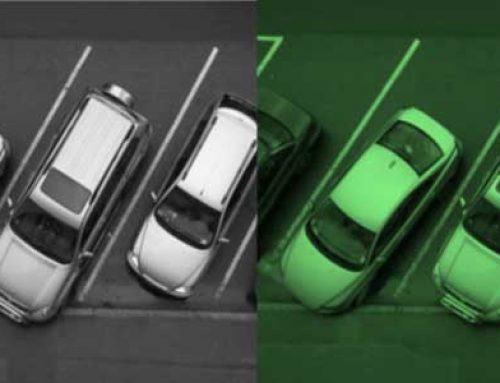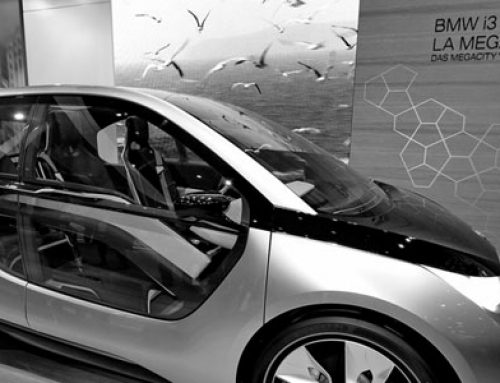[fusion_builder_container hundred_percent=”no” hundred_percent_height=”no” hundred_percent_height_scroll=”no” hundred_percent_height_center_content=”yes” equal_height_columns=”no” menu_anchor=”” hide_on_mobile=”small-visibility,medium-visibility,large-visibility” status=”published” publish_date=”” class=”” id=”” link_color=”” link_hover_color=”” border_size=”” border_color=”” border_style=”solid” margin_top=”” margin_bottom=”” padding_top=”” padding_right=”” padding_bottom=”” padding_left=”” gradient_start_color=”” gradient_end_color=”” gradient_start_position=”0″ gradient_end_position=”100″ gradient_type=”linear” radial_direction=”center center” linear_angle=”180″ background_color=”” background_image=”” background_position=”center center” background_repeat=”no-repeat” fade=”no” background_parallax=”none” enable_mobile=”no” parallax_speed=”0.3″ background_blend_mode=”none” video_mp4=”” video_webm=”” video_ogv=”” video_url=”” video_aspect_ratio=”16:9″ video_loop=”yes” video_mute=”yes” video_preview_image=”” filter_hue=”0″ filter_saturation=”100″ filter_brightness=”100″ filter_contrast=”100″ filter_invert=”0″ filter_sepia=”0″ filter_opacity=”100″ filter_blur=”0″ filter_hue_hover=”0″ filter_saturation_hover=”100″ filter_brightness_hover=”100″ filter_contrast_hover=”100″ filter_invert_hover=”0″ filter_sepia_hover=”0″ filter_opacity_hover=”100″ filter_blur_hover=”0″][fusion_builder_row][fusion_builder_column type=”1_1″ type=”1_1″ layout=”1_1″ spacing=”” center_content=”no” link=”” target=”_self” min_height=”” hide_on_mobile=”small-visibility,medium-visibility,large-visibility” class=”” id=”” hover_type=”none” border_size=”0″ border_color=”” border_style=”solid” border_position=”all” border_radius=”” box_shadow=”no” dimension_box_shadow=”” box_shadow_blur=”0″ box_shadow_spread=”0″ box_shadow_color=”” box_shadow_style=”” padding_top=”” padding_right=”” padding_bottom=”” padding_left=”” margin_top=”” margin_bottom=”” background_type=”single” gradient_start_color=”” gradient_end_color=”” gradient_start_position=”0″ gradient_end_position=”100″ gradient_type=”linear” radial_direction=”center center” linear_angle=”180″ background_color=”” background_image=”” background_image_id=”” background_position=”left top” background_repeat=”no-repeat” background_blend_mode=”none” animation_type=”” animation_direction=”left” animation_speed=”0.3″ animation_offset=”” filter_type=”regular” filter_hue=”0″ filter_saturation=”100″ filter_brightness=”100″ filter_contrast=”100″ filter_invert=”0″ filter_sepia=”0″ filter_opacity=”100″ filter_blur=”0″ filter_hue_hover=”0″ filter_saturation_hover=”100″ filter_brightness_hover=”100″ filter_contrast_hover=”100″ filter_invert_hover=”0″ filter_sepia_hover=”0″ filter_opacity_hover=”100″ filter_blur_hover=”0″ last=”true” first=”true”][fusion_text columns=”” column_min_width=”” column_spacing=”” rule_style=”default” rule_size=”” rule_color=”” hide_on_mobile=”small-visibility,medium-visibility,large-visibility” class=”” id=”” animation_type=”” animation_direction=”left” animation_speed=”0.3″ animation_offset=””]
Climate change. A controversial subject in some circles. However, the vast majority of scientists do agree that man-made climate change is happening. Global warming now sees us at one degree Celsius above pre-industrial levels. Whilst this doesn’t sound very much, the impacts are starting to become evident around the world – and set to be catastrophic unless our course is changed.
Action is now being taken by governments across the globe, and many major corporations are adding their commitment to reducing carbon and supporting the drive to net zero.
But what can small businesses do? Well, quite a lot …
In this guide, we’ll share some practical suggestions on what action can be taken, as well as how even the smallest organisation can play its part.
What is a carbon footprint?
Before getting started, it’s worth taking a look at what a carbon footprint is.
A business carbon footprint is defined as an estimate of the total amount of greenhouse gases produced, either directly or indirectly, in the course of business. It seeks to identify and calculate the emissions released into the atmosphere as a result of the business activities, on an annual basis.
To measure the carbon footprint, data is required from several different sources, such as business operations, travel, and logistics. There is further detail on how to measure your business’ carbon footprint later on.
[/fusion_text][fusion_imageframe image_id=”13962|full” max_width=”” style_type=”” blur=”” stylecolor=”” hover_type=”none” bordersize=”” bordercolor=”” borderradius=”” align=”none” lightbox=”no” gallery_id=”” lightbox_image=”” lightbox_image_id=”” alt=”reduce carbon footprint” link=”” linktarget=”_self” hide_on_mobile=”small-visibility,medium-visibility,large-visibility” class=”” id=”” animation_type=”” animation_direction=”left” animation_speed=”0.3″ animation_offset=”” filter_hue=”0″ filter_saturation=”100″ filter_brightness=”100″ filter_contrast=”100″ filter_invert=”0″ filter_sepia=”0″ filter_opacity=”100″ filter_blur=”0″ filter_hue_hover=”0″ filter_saturation_hover=”100″ filter_brightness_hover=”100″ filter_contrast_hover=”100″ filter_invert_hover=”0″ filter_sepia_hover=”0″ filter_opacity_hover=”100″ filter_blur_hover=”0″]https://maxxia.co.uk/wp-content/uploads/2020/04/reduce-carbon-footprint.jpg[/fusion_imageframe][fusion_separator style_type=”none” hide_on_mobile=”small-visibility,medium-visibility,large-visibility” class=”” id=”” sep_color=”” top_margin=”” bottom_margin=”40px” border_size=”” icon=”” icon_size=”” icon_circle=”” icon_circle_color=”” width=”” alignment=”center” /][fusion_text columns=”” column_min_width=”” column_spacing=”” rule_style=”default” rule_size=”” rule_color=”” hide_on_mobile=”small-visibility,medium-visibility,large-visibility” class=”” id=”” animation_type=”” animation_direction=”left” animation_speed=”0.3″ animation_offset=””]
UK net zero target by 2050
The UK has signed up to the Paris Agreement on climate change, which commits to a maximum worldwide temperature increase of 1.5 degrees Celsius above pre-industrial levels. Given the existing infrastructure and policies in place which effectively ‘lock-in’ future emissions, achieving this target is going to be challenging.
Scientists suggest there is a limited window of opportunity to achieve the change needed to meet this goal – and it’s encouraging that CO2 emissions look to have peaked. But the goal remains extremely challenging and will require significant changes in activity, behaviours, and technology.
It’s not simply enough to stabilise or reduce carbon emissions – they will now need to be reversed to actively remove carbon dioxide from the atmosphere, in other words, negative emissions.
To achieve the UK’s target of net zero emissions by 2050, all parts of the economy must contribute, in particular businesses, which can make a significant positive contribution towards carbon reduction. It’s easy to point towards obvious polluters such as the airline, oil and gas, or freight industries – yet businesses of all types can play a part.
Why should businesses be aiming to reduce carbon emissions?
Without action, many businesses will be affected by the consequences of climate change, for example as a result of shortages of water, reduced productivity, damage and disruption caused by floods or fires.
A major problem with climate change is that carbon emissions have a global effect, requiring collective action. Yet, those making a positive contribution do not see the full benefits of their efforts. Without intervention, such as a carbon tax, this can encourage ‘free-riding’ whereby individuals or organisations seek to benefit from the efforts of others, without changing their behaviours or activities.
Some carbon reduction measures will require significant investment – and for some, it will be difficult to make a business case for doing so. Increased regulation will likely drive some of this as governments begin to introduce more stringent environmental policies.
Here are some of the other reasons companies should be taking action to reduce their carbon footprint:
[/fusion_text][/fusion_builder_column][fusion_builder_column type=”1_1″ type=”1_1″ layout=”1_1″ spacing=”” center_content=”no” link=”” target=”_self” min_height=”” hide_on_mobile=”small-visibility,medium-visibility,large-visibility” class=”” id=”” background_image_id=”” hover_type=”none” border_size=”0″ border_color=”” border_style=”solid” border_position=”all” border_radius_top_left=”” border_radius_top_right=”” border_radius_bottom_right=”” border_radius_bottom_left=”” box_shadow=”no” box_shadow_vertical=”” box_shadow_horizontal=”” box_shadow_blur=”0″ box_shadow_spread=”0″ box_shadow_color=”” box_shadow_style=”” padding_top=”7%” padding_right=”7%” padding_bottom=”7%” padding_left=”7%” margin_top=”” margin_bottom=”” background_type=”single” gradient_start_color=”” gradient_end_color=”” gradient_start_position=”0″ gradient_end_position=”100″ gradient_type=”linear” radial_direction=”center center” linear_angle=”180″ background_color=”#f2f2f2″ background_image=”” background_position=”left top” background_repeat=”no-repeat” background_blend_mode=”none” animation_type=”” animation_direction=”left” animation_speed=”0.3″ animation_offset=”” filter_type=”regular” filter_hue=”0″ filter_saturation=”100″ filter_brightness=”100″ filter_contrast=”100″ filter_invert=”0″ filter_sepia=”0″ filter_opacity=”100″ filter_blur=”0″ filter_hue_hover=”0″ filter_saturation_hover=”100″ filter_brightness_hover=”100″ filter_contrast_hover=”100″ filter_invert_hover=”0″ filter_sepia_hover=”0″ filter_opacity_hover=”100″ filter_blur_hover=”0″ last=”true” first=”true”][fusion_checklist circle=”yes” circlecolor=”#3fa535″ divider=”no” hide_on_mobile=”small-visibility,medium-visibility,large-visibility”][fusion_li_item icon=”fa-shopping-cart fas”]
Growing consumer awareness and shifts in behaviour which open opportunities for new products or services, or as a means of differentiation. We are already seeing organisations offering carbon-neutral shipping and products such as carbon-neutral coffee. In an online survey by Neilson, 81% of respondents felt strongly that companies should help improve the environment. Consumers are using their spending power to effect the changes they want to see.
[/fusion_li_item][fusion_li_item icon=”fa-users fas”]
As organisations compete to attract talent, they need to be aware that employees view organisations which take social and environmental issues seriously as a positive factor, enhancing the strength of the employer brand. This will become more of a factor as the next generation of the workforce comes through.
[/fusion_li_item][fusion_li_item icon=”fa-check-double fas”]
Strengthening the brand – the British Standards Institute (BSI Group) has a carbon-neutral programme which provides the credentials that the organisation is committing to carbon reduction.
[/fusion_li_item][fusion_li_item icon=”fa-cart-plus fas”]
New commercial opportunities will arise from the development of new products to suit a zero-carbon future. An innovative New York firm has created Air Co Vodka which is carbon negative and is created from carbon dioxide extracted from the atmosphere.
[/fusion_li_item][fusion_li_item icon=”fa-hand-holding-heart fas”]
Social conscience – for some, doing the right thing is enough. But for those less philanthropic …
[/fusion_li_item][fusion_li_item icon=”fa-coins fas”]
Costs savings – being more energy-efficient, reducing waste and delaying unnecessary purchases will save money. Increasing efficiency and reducing product costs will help the business to be more competitive and potentially generate more new business (or make greater profits)
[/fusion_li_item][/fusion_checklist][/fusion_builder_column][fusion_builder_column type=”1_1″ type=”1_1″ layout=”1_1″ spacing=”” center_content=”no” link=”” target=”_self” min_height=”” hide_on_mobile=”small-visibility,medium-visibility,large-visibility” class=”” id=”” background_image_id=”” hover_type=”none” border_size=”0″ border_color=”” border_style=”solid” border_position=”all” border_radius_top_left=”” border_radius_top_right=”” border_radius_bottom_right=”” border_radius_bottom_left=”” box_shadow=”no” box_shadow_vertical=”” box_shadow_horizontal=”” box_shadow_blur=”0″ box_shadow_spread=”0″ box_shadow_color=”” box_shadow_style=”” padding_top=”15px” padding_right=”” padding_bottom=”” padding_left=”” margin_top=”” margin_bottom=”” background_type=”single” gradient_start_color=”” gradient_end_color=”” gradient_start_position=”0″ gradient_end_position=”100″ gradient_type=”linear” radial_direction=”center center” linear_angle=”180″ background_color=”” background_image=”” background_position=”left top” background_repeat=”no-repeat” background_blend_mode=”none” animation_type=”” animation_direction=”left” animation_speed=”0.3″ animation_offset=”” filter_type=”regular” filter_hue=”0″ filter_saturation=”100″ filter_brightness=”100″ filter_contrast=”100″ filter_invert=”0″ filter_sepia=”0″ filter_opacity=”100″ filter_blur=”0″ filter_hue_hover=”0″ filter_saturation_hover=”100″ filter_brightness_hover=”100″ filter_contrast_hover=”100″ filter_invert_hover=”0″ filter_sepia_hover=”0″ filter_opacity_hover=”100″ filter_blur_hover=”0″ last=”true” first=”true”][fusion_text columns=”” column_min_width=”” column_spacing=”” rule_style=”default” rule_size=”” rule_color=”” hide_on_mobile=”small-visibility,medium-visibility,large-visibility” class=”” id=”” animation_type=”” animation_direction=”left” animation_speed=”0.3″ animation_offset=””]
What about carbon offsetting?
Carbon offsetting is a market. By purchasing an offset, you are trading to fund projects which reduce greenhouse gas emissions.
There is a misconception that these carbon offsets will cancel out the emissions, e.g. from a flight, which is a well-known application of carbon offsets. However, this is usually not the case. A study carried out in 2017 found that 85% of off-set projects either overestimated their impact – or failed to deliver any carbon reduction at all.
There are benefits to these schemes, however. They are often operated in developing countries, helping to generate jobs and support projects that wouldn’t otherwise happen. And it’s better than nothing, but isn’t going to deliver the scale of change in CO2 required to effect climate change.
[/fusion_text][fusion_content_boxes layout=”clean-horizontal” columns=”1″ icon_align=”left” animation_direction=”left” animation_speed=”0.3″ hide_on_mobile=”small-visibility,medium-visibility,large-visibility” heading_size=”3″ title_color=”#ffffff” body_color=”#ffffff” backgroundcolor=”#e55302″ iconspin=”no” iconcolor=”#e55302″ circlecolor=”#ffffff” circlebordercolor=”#ffffff” hover_accent_color=”#e55302″ margin_bottom=”-20px”][fusion_content_box title=”Simon Lewis, professor in the school of geography at Leeds University, talking to the Guardian:” backgroundcolor=”” icon=”fa-quote-left fas” iconflip=”” iconrotate=”” iconspin=”” iconcolor=”” circlecolor=”” circlebordersize=”” circlebordercolor=”” outercirclebordersize=”” outercirclebordercolor=”” image=”” image_id=”” image_max_width=”” link=”” linktext=”Read More” link_target=”” animation_type=”” animation_direction=”left” animation_speed=”0.3″ animation_offset=””]
“There is a lot of talk about offsetting, but the reality is that every country and every sector needs to reach zero emissions, with any small amount of residual emissions needing to be removed from the atmosphere,” said Lewis. “The use of forests as an offset is largely a marketing tool for companies to try to continue with business as usual.”
[/fusion_content_box][/fusion_content_boxes][fusion_text columns=”” column_min_width=”” column_spacing=”” rule_style=”default” rule_size=”” rule_color=”” hide_on_mobile=”small-visibility,medium-visibility,large-visibility” class=”” id=”” animation_type=”” animation_direction=”left” animation_speed=”0.3″ animation_offset=””]
How can businesses reduce their carbon footprint?
There may be many changes that can be adopted by a business to reduce its carbon footprint. Here are some practical suggestions for review as part of the process:
1. Consider your energy source
Switch to renewable energy; either onsite or using green electricity tariffs. Whilst switching to energy sources such as solar will require an initial investment, there will be long-term payback, in addition to the environmental benefits.
In purchasing green energy, make sure it is backed by a REGO certificate. REGO stands for Renewable Energy Guarantees of Origin and is a scheme to provide transparency and assurance that the energy is renewably sourced.
2. Buildings
Ensure that buildings are adequately insulated to avoid wasted energy. Window film is available which can be applied to reflect heat out in summer and then reversed to keep the heat in during winter.
Keep on top of heating and cooling systems and ensure they are not competing with one another. Also check that systems aren’t being manually changed, resulting in dramatic swings in temperature.
3. An energy-efficient mindset
Simply switching things off when not in use saves energy and money.
4. Energy-efficient equipment
Replacing items such as boilers or lighting systems with newer and more efficient versions can help improve the efficiency of buildings and operations.
Lighting accounts for 20% of all of the energy usage in the UK and, therefore, a substantial proportion of the energy bills. Finding ways to make lighting more efficient can dramatically cut costs. LED lighting is now providing a cheaper and more environmentally friendly way of lighting premises for many organisations, typically delivering fast pay-back on the initial investment.
5. Technology replacement
Replacing technology should be considered holistically. IT equipment is one category that has a frequent replacement cycle. Whilst some new equipment will be more energy efficient to operate, it’s also important to consider the overall greenhouse gases generating during its production and transportation. Edinburgh University conducted a study that found that by extending the life of a single computer and monitor, from four years to six years, carbon emissions equivalent to approximately 190kg CO2 was avoided.
6. Recycle
When technology is replaced – make sure it’s disposed of responsibly and recycled wherever possible. Any electronic waste – or e-waste- should be recycled in line with WEEE standards.
7. Go electric?
A high profile area in the push towards carbon reduction, with the UK government announcing the planned future ban on the sale of new petrol and diesel-fuelled vehicles.
Electric cars are a greener option for frequent users; while some of the electricity used to fuel the car will be produced from non-renewable sources, these vehicles are more efficient overall, resulting in reduced CO2 emissions.
However, the same issue as raised above in technology replacement applies. Each new electric car will result in carbon emissions as a result of its creation. Depending on its use, the embedded carbon resulting from its manufacture might be higher than the lifetime emissions of the car.
Rather than replacing, it may be better to retain an existing vehicle and aim to reduce usage.
8. Supply chain
Work with the supply chain to reduce supplier emissions and improve efficiency.
9. Product design
Consider the inputs into any production / product design. For example, a food manufacturer could re-create recipes to make use of more locally grown ingredients. Or buy from suppliers with lower CO2 emissions (note this isn’t always a case of fewer miles travelled as it will also depend on the production process).
10. Reduce travel
Simply finding ways to reduce business travel is a very easy way to reduce the business carbon footprint, but also make cost and time savings too!
Air travel, in particular, has a high impact. According to stats from the International Civil Aviation Organization a round trip from Heathrow to New York generates around 671 kg of CO2 per passenger. If you have to be in New York, the travel alternatives are limited. But for some routes, e.g. London to Paris, the Eurostar is a viable option which would reduce the carbon emissions by an estimated 91%.
Alternative ways of working can also be highly effective. Video conferencing significantly reduces the carbon impact of a meeting when compared to travelling to reach meetings. This study estimates that video conferencing produces on 7% of the emissions of meeting in person.
11. Reduce waste
Another easily implemented area for focus which will also save money. Reusing or recycling technology and phones has already been mentioned above.
Daily actions such as reducing paper waste can soon add up. While email has already replaced most physical post, here are some other suggestions:
- Replace paper processes with electronic ones
- Cut down paper records in favour of electronic document storage
- Discourage unnecessary printing
Other common areas in which waste can be reduced are food waste – especially for those in the food industry, but also applicable for companies that have catering services. And avoiding the use of single-use plastics, for example, disposable cups at a water cooler. Encourage staff to bring their reusable cups.
To get started, audit current waste levels and develop practical actions to reduce waste which focus on reducing, reusing and recycling.
12. Reduce email
This isn’t so obvious – especially given we’ve just mentioned cutting down on paper use.
Estimates suggest that an average business user creates 135kg of CO2 equivalent from their email activity in a year. This is the equivalent of driving 200 miles in a family car!
But this is so easy to cut down. Simply stopping unnecessary email traffic, such as a ‘thank you’ email could result in a substantial collective saving of carbon emissions. If every adult in the UK sends one less unnecessary email a day, it could save 16,433 tonnes of carbon a year, according to energy company OVO. This equates to taking 3,334 diesel cars off the road.
As well as reducing emails sent, consider swapping email attachments for links to documents, not sending messages to multiple recipients if not needed, and unsubscribing from mailing lists if emails are no longer required. All small things that collectively add up.
13. Web hosting
The reason for the emissions created by email – and also internet use as a whole – is that web servers require energy to power and cool them. This energy is typically provided by fossil fuels, although there are now ‘green’ alternatives with sustainable web hosting available.
14. Support home working
While this won’t work for all jobs, many office workers can work remotely saving the pollution caused by the daily commute. Even if not 100%, a day or two a week will make a difference.
15. Educate and engage employees
When making changes or introducing new initiatives, it is important to involve employees. In doing so, they will understand the changes being implemented and are more likely to support than resist the new environmentally-focused policies. And not only this, they are likely to have ideas and suggestions to contribute towards the energy-saving goal.
Achieving carbon reduction and moving on the journey towards carbon neutral will be different for each business. In the next section, we will cover how to get started in implementing a plan towards reducing your carbon footprint.
[/fusion_text][fusion_imageframe image_id=”13961|full” max_width=”” style_type=”” blur=”” stylecolor=”” hover_type=”none” bordersize=”” bordercolor=”” borderradius=”” align=”none” lightbox=”no” gallery_id=”” lightbox_image=”” lightbox_image_id=”” alt=”” link=”” linktarget=”_self” hide_on_mobile=”small-visibility,medium-visibility,large-visibility” class=”” id=”” animation_type=”” animation_direction=”left” animation_speed=”0.3″ animation_offset=”” filter_hue=”0″ filter_saturation=”100″ filter_brightness=”100″ filter_contrast=”100″ filter_invert=”0″ filter_sepia=”0″ filter_opacity=”100″ filter_blur=”0″ filter_hue_hover=”0″ filter_saturation_hover=”100″ filter_brightness_hover=”100″ filter_contrast_hover=”100″ filter_invert_hover=”0″ filter_sepia_hover=”0″ filter_opacity_hover=”100″ filter_blur_hover=”0″]https://maxxia.co.uk/wp-content/uploads/2020/04/companies-carbon-emissions.jpg[/fusion_imageframe][fusion_separator style_type=”none” hide_on_mobile=”small-visibility,medium-visibility,large-visibility” class=”” id=”” sep_color=”” top_margin=”” bottom_margin=”40px” border_size=”” icon=”” icon_size=”” icon_circle=”” icon_circle_color=”” width=”” alignment=”center” /][fusion_text columns=”” column_min_width=”” column_spacing=”” rule_style=”default” rule_size=”” rule_color=”” hide_on_mobile=”small-visibility,medium-visibility,large-visibility” class=”” id=”” animation_type=”” animation_direction=”left” animation_speed=”0.3″ animation_offset=””]
How to implement a plan to reduce a business carbon footprint
There are several organisations which can help support businesses on a carbon reduction or carbon-neutral journey, including some certifications such as Carbon Neutral.
However, a simple framework to follow is:
[/fusion_text][fusion_imageframe image_id=”13992|full” max_width=”” style_type=”” blur=”” stylecolor=”” hover_type=”none” bordersize=”” bordercolor=”” borderradius=”” align=”none” lightbox=”no” gallery_id=”” lightbox_image=”” lightbox_image_id=”” alt=”implementation of carbon reduction programme” link=”” linktarget=”_self” hide_on_mobile=”small-visibility,medium-visibility,large-visibility” class=”” id=”” animation_type=”” animation_direction=”left” animation_speed=”0.3″ animation_offset=”” filter_hue=”0″ filter_saturation=”100″ filter_brightness=”100″ filter_contrast=”100″ filter_invert=”0″ filter_sepia=”0″ filter_opacity=”100″ filter_blur=”0″ filter_hue_hover=”0″ filter_saturation_hover=”100″ filter_brightness_hover=”100″ filter_contrast_hover=”100″ filter_invert_hover=”0″ filter_sepia_hover=”0″ filter_opacity_hover=”100″ filter_blur_hover=”0″]https://maxxia.co.uk/wp-content/uploads/2020/04/implementation-of-carbon-reduction-programme.jpg[/fusion_imageframe][fusion_text columns=”” column_min_width=”” column_spacing=”” rule_style=”default” rule_size=”” rule_color=”” hide_on_mobile=”small-visibility,medium-visibility,large-visibility” class=”” id=”” animation_type=”” animation_direction=”left” animation_speed=”0.3″ animation_offset=””]
1. Measure
To track progress, you first need to understand the start point. By measuring the business carbon footprint, you can get a baseline against which to assess the success of the various initiatives. The very act of measuring will also highlight those areas that have the greatest scope for improvement too.
Guidance on how to calculate carbon footprint for a business is available in this DEFRA Small Business User Guide.
It might be helpful to use a business carbon footprint calculator – this one is the SME Carbon Footprint Calculator which has been built as part of The Carbon Trust’s Green Business Fund to help businesses manage and track their carbon emissions.
2. Target
Set a goal on where you would like the business to get to in its carbon reduction journey. This gives focus and a measure of success.
3. Plan
Using the list of suggestions above, along with ideas generated within the business, create an action plan of steps to be taken by the business.
4. Engage
Involving all those within the organisation to help generate ideas and implement initiatives will result in increased adoption of new policies and better results.
Communication around why changes are being introduced and regular updates on how it’s going will also be an important part of your programme.
Summary
Active reduction to carbon emissions is essential to achieving the slowdown in climate change and to meeting the worldwide targets laid out in the Paris Agreement.
Action will need to be taken in a number of areas by governments, individuals and businesses. There are many compelling reasons for businesses to take action to reduce their carbon footprint from government regulations, consumer pressure and commercial opportunities.
This article has suggested practical ways a business can take action to make carbon emissions reductions – many of which bring additional benefits in operational efficiency and cost savings.
Getting started doesn’t need to be complicated and there are several resources available to support small businesses.
Help with investment?
If you are interested in investing in green energy projects or energy-efficient technology such as LED lighting, Maxxia is an asset finance company and has helped numerous organisations with funding for such initiatives. Read more about Renewable Energy Financing.
If you have begun to implement any changes in aiming to reduced your company’s carbon emissions, we’d love to hear your experiences in the comments below.
[/fusion_text][/fusion_builder_column][/fusion_builder_row][/fusion_builder_container]







Relevant service reviews are exactly what college students need in order to prevent devastating cooperation that may impair academic prosperity. There is an unlimited number of alternatives worth time and attention. https://bestpaperwritingservicereviews.com/reviews/writersperhour-review
Hey there! I know this is kinda off topic but I was wondering if you knew where I could locate a
captcha plugin for my comment form? I’m using the
same blog platform as yours and I’m having problems finding one?
Thanks a lot!
I always used to read paragraph in news papers but now as I am a user
of internet thus from now I am using net for content, thanks to web.